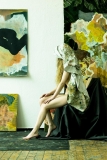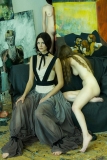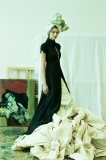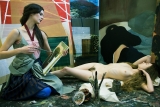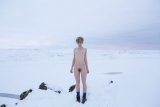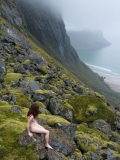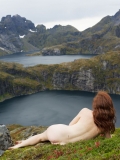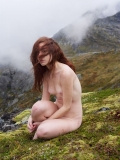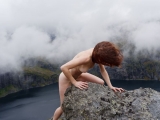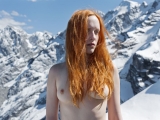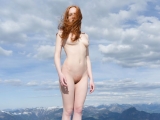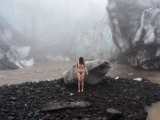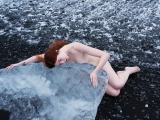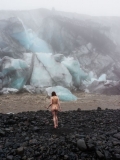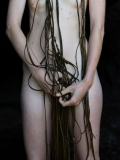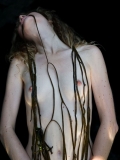Works
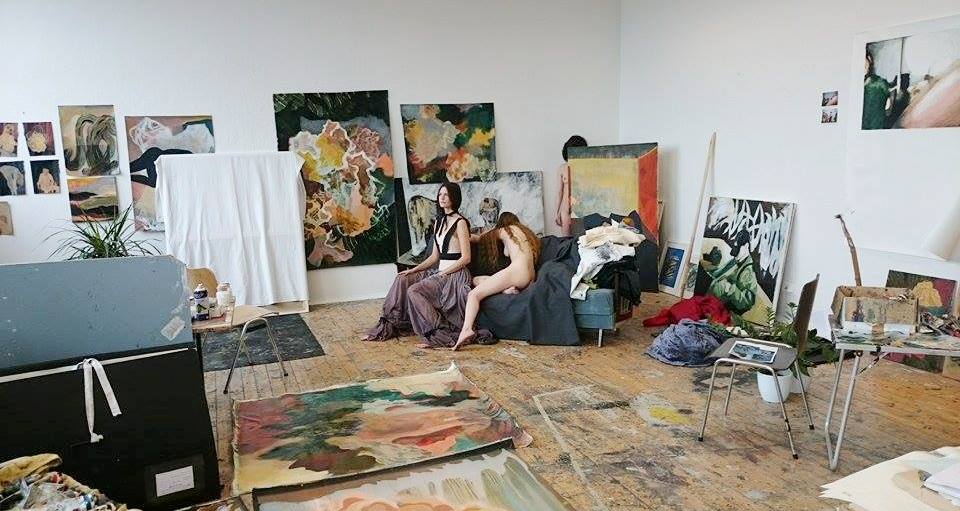
Korbinian Vogt · Loreen Hinz
Staging of the Female Body
The double exhibition “Staging of the Female Body,” through 24 limited fine-art prints, presents the photographic positions of Loreen Hinz and Korbinian Vogt, both of whom are devoted to the staging of the female body.
2 May 2017 – 13 June 2017
On 2 May beginning at 7 pm all are invited to the opening reception at the gallery.
The artist Korbinian Vogt will be present.
The following works are presented in the show:
Staging of the Female Body
The New Leipzig School — since the 1990s, this assignation has been applied exclusively to figurative painting, although the photographic arts, and here especially the work of Leipzig photographer Loreen Hinz (born in 1983), should be included. Hinz unites figurative representation with experimental manipulation and thus generates interpretations of her subjects which seem surreal. The series “Iconoclast” (2016), for example, consists of double-sided images scanned on foil whose motifs – portraits of female models – are enhanced with expressive retouching, so that the effect of the original and the new image are perceived as conflicting aesthetic concepts. On view for the first time at the Gallery for Contemporary Photography, the piece “Madame Seedler” (2016), which was born out of inspiration found in the studio of Leipzig-based artist Anija Seedler, connects aspects of modern fashion photography through its artistic adaptations of early German Masters such as Cranach und Hans Baldung Grien. The symbiosis of modern painting of Leipzig students and the human individual forms a highpoint in the oeuvre of the artist who also lives in Leipzig artist.
Korbinian Vogt (born 1995) from Munich is one of the most remarkable protagonists in young German photography. Completely unimpressed by the fact that – as it was regarded as the epitome of folksy, fascistoid-inspired kitsch and also reflected traditional roles – the female nude has played virtually no role in photography since the 1960s, Vogt devotes himself to precisely this topic, but without any sociocultural implications: for him, it is only the elements of nature that feel right. The complete absorption of the naked female body in nature is just as self-evident to Vogt as are the well-thought-out pictorial compositions which capture the aesthetics of the special moment. So he hikes with his models to carefully chosen locations and then shoots them nude in front of breathtaking mountain ranges or in inhospitable ice landscapes. The pressing inevitability of these motifs makes it clear that, ultimately, it is virulent inner images that the artist visualizes. The aesthetically exaggerated truth of their representation lends his photographic works a magic that goes beyond authenticity and one that the viewer cannot escape, they “brace themselves against being lost and thus open up a visual level replete with little miracles. His miracles – between soliloquy and storytelling.” His photo book “Narrated Monologue” (2016) was very well received.
